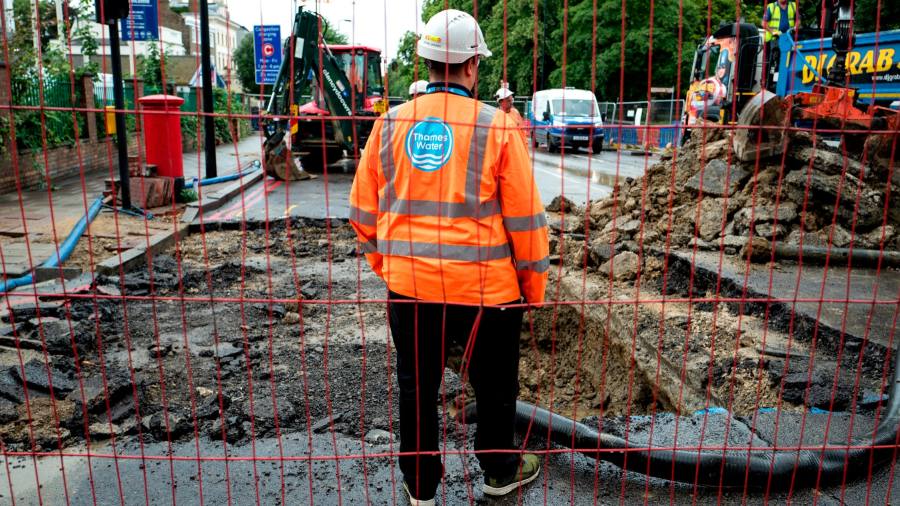
Receive free Utilities updates
We’ll send you a myFT Daily Digest email rounding up the latest Utilities news every morning.
Running a water utility — a natural monopoly selling a basic necessity to a captive market — ought not to be difficult. The terms of England’s experiment with privatising former publicly-owned regional water companies, where they started out with zero debt, seemed especially propitious. Three decades later, investors have loaded up the sector with borrowing and taken out billions in dividends, while infrastructure is crumbling and public anger rising over leaks and sewage discharges. News this week that the government is on standby to take Thames Water into temporary public ownership in case of its potential collapse is another sign that the great experiment has failed.
Thames is a specially problematic case. Years of poor performance have combined with the rising costs of servicing its £16bn debt — in part a legacy of its previous ownership by Australia’s Macquarie, which extracted supersized returns — to leave it unable to fund all of its projected spending in coming years. About half its debt is linked to one inflation measure while its bills are linked to a lower one.
Taking on more debt would be tricky, so Thames expected its current owners to stump up. Equity shareholders, including foreign and domestic pension funds and the Chinese and Abu Dhabi sovereign wealth funds, have so far provided only £500mn of an expected £1.5bn. They are no doubt chary of throwing good money after bad. A stand-off has ensued.
The government will surely be reluctant to take Thames into public hands, imposing costs on taxpayers and losses on shareholders which include the UK universities pension and the kind of foreign investors it is relying on to fund other infrastructure investments. Something, though, must give.
Thames is the most highly leveraged company in the sector, but the regulator Ofwat last December flagged resilience concerns at four other suppliers too. The simple explanation for the sector’s troubles is that what are in essence simple businesses became playgrounds for financial engineering. Predictable revenue streams made water companies easy to leverage, and so appealing to buyout funds. All but three of England’s originally publicly-quoted water companies have been taken off the market (Scotland and Northern Ireland remain in the state sector, and Wales now has a not-for-profit entity).
Companies and the regulator tout sizeable efficiency gains since privatisation that they say have kept bills lower than they would otherwise have been; Ofwat says investments have “roughly doubled”. But buyers often adopted complex structures to maximise leverage and minimise tax, and companies have paid out more than £72bn in dividends while a sector that was debt-free three decades ago has run up debts of £60bn. Environmental standards were for too long poorly enforced.
Few have copied England’s Thatcherite experiment with full privatisation of water supply. It would be hard, for now, to change the ownership model since, unless they start to fail, the cost of renationalising these businesses is prohibitive. But the way they are managed and supervised needs a comprehensive rethink. Ofwat changed its rules this year so that it can force companies to align their dividend policy with performance for customers and the environment. It should be given further powers to police balance sheets and financial structures and health; a cap on leverage should be considered.
Ultimately, however, it is customers who will find themselves paying for much of the costs of past mistakes — as well as those from meeting stricter pollution targets and adapting to climate change — via higher bills.